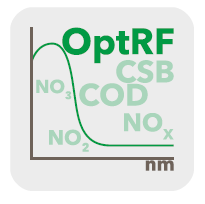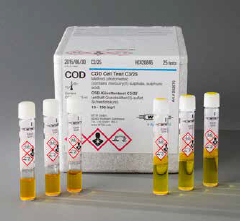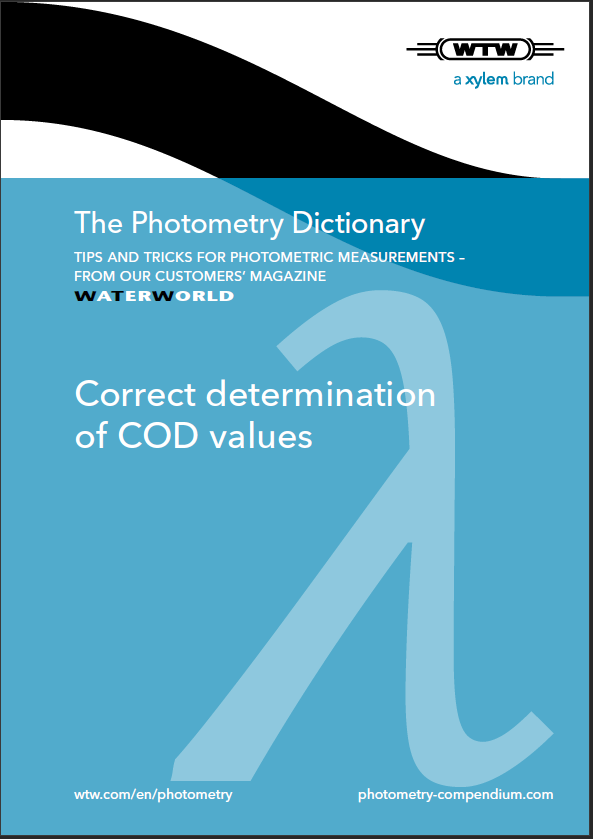WATERWORLD
Correct determination of COD values
For the determination of COD values, the measurement with cuvette tests is much easier compared to titration and should be preferred regarding the quantity of necessary reagents. This is why the cuvette tests for self-monitoring have been approved as ISO compliant with the ISO 15705.
You should take the following factors for the precise determination of the COD value into consideration, so that the results can withstand the inspection by the authorities:
Homogenization
An outstanding homogenization is required due to the small sample sizes. The smaller the sample volume, the more the even distribution of the substance must be war-ranted so that a representative result can be achieved with 2 to 3 determinations. Especially for samples with a high organic contamination, the sample volumes at 0.1 mg/l are so small that the homogenization is extremely impor-tant. The tolerance for the measuring results of extremely contaminated samples can still be at ±20% in the lower range with the test 01797.
Optimum measuring range limits for COD determination
Test sets are the most accurate in the middle of the meas-uring range of the respectively indicated COD values:
With the test set 01796 of 5 to 80 mg/l, you can now cap-ture a typical sequence contamination of approx. 40 to 60 mg/l COD. Especially for small wastewater treatment sites, the COD test set C3/25 of 10–150 mg/l is optimal, as the results are often between 60 and 120 mg/l. And do not forget about the test set 14560, which covers the bottom range of the COD values with 4 to 40 mg/l.
Mercury-free COD tests also measure chloride, which leads to a falsified result. There is precipitation with a higher chloride content.
Procedure to determine COD values for unknown samples
If you are working with unknown samples or if the COD environment changes, you should approximate the sample and utilize all the measures of „good laboratory practices“ and analytical quality assurance: If a measuring value is near the measuring range limit or if the COD value appears questionable, selecting a different measuring range and using a control standard are the correct meas-ures to assure a correct measuring result. A double deter-mination is also important, for example, to detect an out-lier with the COD value. Dilutions, especially for highly concentrated samples, can also be a suitable measure.
OptRF

In June 2015 WTW introduced the new optical reagent-free measurement pro-cedure (Opt RF) for direct and cost-free COD mesasurement in discharge sam-ples of municipal wastewater plants.

COD test sets for the values 5–80 mg/l and 5.000–90.000 mg/l
With the COD test 01796 for the determination of 5–80 mg/l COD, everybody who measures at 40-50 mg/l will find an optimal measuring range coverage. And the people working with extremely high organic freight, such as slaughter yards, the dairy industry, etc. will find the test for every situation with the new test set 01797 for 5.000–90.000 mg/l COD. The method data can be foud on our website.
| Model |
Measuring range COD |
Test type |
Article No. |
Observations |
| 01796 |
5 – 8 mg/l COD |
KT |
252 092 |
|
| 01797 |
5.000 – 90.000 mg/l COD |
KT |
251 990 |
|
| 19253 |
2 – 160 mg/l Cyanuric acid |
KT |
251 990 |
Replaces kit no.19250 |
Here you can download the whole article as a PDF:
